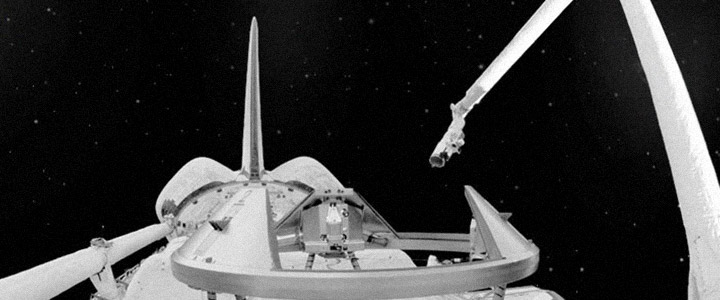About Us
Company profile
3Dconnexion designs powerful, research-based ergonomic hardware and smart, easy-to-use software that combine seamlessly to make working in the world’s most popular CAD applications and 3D environments fast, comfortable and fun.
From our SpaceMouse® 3D mice and CadMouse, to the Keyboard and Numpad, 3Dconnexion products provide a superior way for CAD professionals to interact with and experience the digital world.
Our mission is to provide peace of mind to the professionals who design the buildings, machines and products that power our world. They take their work seriously, and so do we. Technology and build quality combine to deliver the performance that professionals demand – and deserve.
3Dconnexion is a global company with offices in Germany, Japan, Monaco, Poland and the United States.
Our History
3D Mouse – The Ideal Man-Machine Interface
Groundbreaking developments tend to begin long before there is a genuine need for them in the marketplace, and innovations are triggered by people who have one thing in common – an idea! But oftentimes, years pass between concept and product.
From Idea to Genuine Product
Computer graphics originated in the 1950s, when the Whirlwind computer was developed at the Massachusetts Institute of Technology (MIT), along with a light pen input source which worked directly with a CRT monitor. The first Computer Aided Design (CAD) application using the light pen dates back to 1963 when Ivan E. Sutherland laid the foundation with his doctoral thesis “Sketchpad: A man-machine graphical communication system.”
The computer mouse as an input device also had its beginnings in the early 1960s. Developed under the name “X-Y position indicator for a display system,” it was eventually patented in 1970 based on the principle of two wheels fixed at right-angles to one another.
CAD and Graphics Programs for All
The more widespread proliferation of the mouse began in 1984 with the Apple Macintosh and the first mainstream graphical user interface to be used with a mouse. Within a year, Logitech began selling the first three-button ball mouse. Shortly thereafter, less expensive, more powerful chips for image processing led to the development of more advanced 2D optical mice.
From the 2D to 3D Mouse
The history of the 3D mouse started in the late 1970s at the German Aerospace Research Center (DLR), where efforts were made at the Institute for Robotics and Mechatronics to control a robot arm in Cartesian space. In 1981, after lengthy experiments, a six axis force/torque sensor was integrated into a plastic ball. The ball registered the linear and rotational displacements generated by the force and torque of the human hand, which were then computationally transformed into translational and rotational motion speeds.
After further research, DLR introduced a low-cost optical measurement system, using six one-dimensional position detectors. A global patent was granted and in 1993, SpaceMouse®, the world’s first affordable 3D mouse, was launched. The product was marketed under the name Magellan in the US and Asia.
In 1993, a 3D controller was used for the first time on the space shuttle Columbia, manipulating the first robotic arm in space. That same year, 3Dconnexion (later to become a subsidiary of Logitech) was formed and its 3D mouse journey began.

Progress is everything
3Dconnexion 3D mice deliver a level of natural and intuitive control of 3D models and environments that is unattainable with a traditional mouse and keyboard. Using a 3D mouse, design engineers and 3D enthusiasts are able to work as if they’re holding the digital model or camera in their hand. Designed for use along with a standard mouse, 3D mice accelerate performance as users no longer have to position models step by step. Using the 3D mouse controller cap, models can be simultaneously panned, zoomed and rotated while the standard mouse is used for selection, creation and editing tasks.
3Dconnexion’s core adaptive micro-precision sensor technology was developed completely in-house with each 3Dconnexion 3D mouse featuring six high performance optical sensors which react to movements in the micrometer range. In addition to constant improvements in sensor technology and device ergonomics, 3Dconnexion works closely with leading software and hardware suppliers to ensure widespread support, integration and adoption of 3D mice in today’s 3D environments.
3Dconnexion is committed to driving design innovation by ensuring an intuitive and natural connection to today’s 3D applications and design environments. This commitment paid off when 3Dconnexion surpassed its two millionth 3D mouse milestone. According to 3Dconnexion, this milestone underscores the widespread adoption of 3D mice in the market, and confirms that an idea can give birth to a product that becomes a fixed part of our lives. And the future looks bright as 3Dconnexion continues to bring the benefits of superior 3D navigation to an ever wider range of software applications and new market opportunities, bound only by the imagination.

